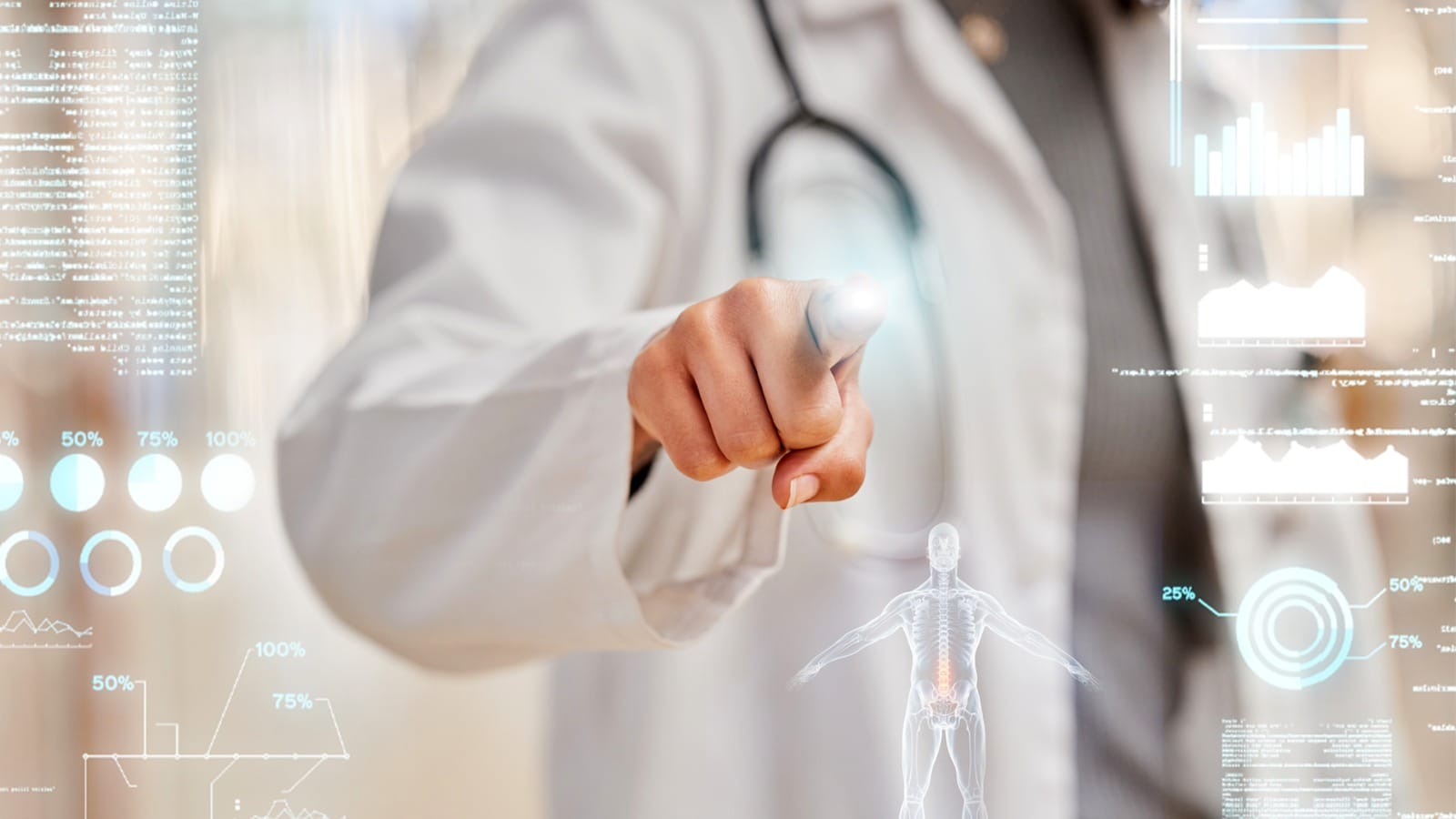Code, Care, and Connectivity: Unpacking the HealthTech Landscape

The healthcare technology landscape is undergoing a big shift in 2024, with innovations that seemed like science fiction just a few years ago becoming everyday realities. From AI-powered diagnostics to virtual hospitals, the fusion of cutting-edge tech and medical expertise is reshaping how we approach health and wellness.
At the heart of this revolution lies the seamless integration of data, devices, and human insight. Picture a world where your smartwatch doesn't just count steps, but serves as a personal health guardian, detecting subtle changes in your vitals and alerting your doctor before you even feel ill. This isn't a far-off dream – it's happening now.
Take Sarah, a 45-year-old marketing executive with a family history of heart disease. Her wearable device, synced with an AI-driven health platform, monitors her heart rate, sleep patterns, and activity levels round the clock. One day, it notices an irregular heartbeat pattern. Within minutes, Sarah's doctor receives an alert, reviews the data, and schedules a virtual consultation. This early intervention potentially prevents a major cardiac event, all without Sarah ever stepping foot in a hospital.
But the impact of healthtech goes far beyond individual care. Researchers are harnessing the power of machine learning to sift through vast datasets, uncovering patterns in diseases that have long eluded human observation. This Big Data approach is accelerating drug discovery and opening new avenues for personalized medicine.
Of course, with great power comes great responsibility. The healthtech boom has thrust cybersecurity into the spotlight like never before. Healthcare providers are investing heavily in robust security measures, recognizing that protecting patient data is as crucial as protecting their physical health.
Programming Languages Shaping HealthTech:
Behind the scenes, the choice of programming languages plays a crucial role in building the infrastructure for this healthtech revolution. Several key languages have emerged as frontrunners in the development of healthcare applications:
- Python has become a cornerstone in healthtech development. Its versatility, simplicity, and robust libraries for AI, ML, and data analysis make it ideal for creating sophisticated healthcare applications. From processing medical imaging data to developing predictive models for disease progression, Python's flexibility shines.
- R continues to be a powerhouse for statistical analysis and data visualization in the medical field. It's particularly valued in genomics and clinical research, where its specialized packages enable researchers to derive meaningful insights from complex datasets.
- For mobile healthcare applications, Kotlin and Java dominate the Android landscape. Their strong typing and robust frameworks ensure the development of stable, high-performance apps crucial for remote patient monitoring and telemedicine platforms.
- On the iOS side, Swift reigns supreme. Its safety features and performance optimizations make it an excellent choice for developing secure, responsive healthcare apps that handle sensitive patient data.
These languages form the backbone of many healthtech solutions, enabling everything from AI-driven diagnostic tools to user-friendly patient portals.
The democratization of health information and care is perhaps one of the most profound impacts of this technological revolution. In remote villages and urban centers alike, smartphones are becoming powerful tools for health education and basic diagnostics. Consider the case of Ruth, a community health worker in rural Peru. Armed with a tablet and AI-powered diagnostic software, she can now perform preliminary screenings for common ailments, from eye disorders to skin conditions. This technology doesn't replace trained medical professionals, but it does extend their reach, allowing them to focus on more complex cases while ensuring basic care reaches those who need it most.
Yet, as we embrace these innovations, we must grapple with thorny ethical questions. The use of AI in healthcare decision-making raises concerns about accountability and bias. Who's responsible when an algorithm makes a mistake? How do we ensure these systems don't perpetuate existing healthcare disparities? These aren't just academic debates – they have real-world consequences for patients and providers alike.
Take the realm of genetic testing and personalized medicine. The ability to analyze an individual's genetic makeup and tailor treatments accordingly is revolutionizing fields like oncology. Patients with certain types of cancer can now receive therapies precisely targeted to their tumor's genetic profile, potentially improving outcomes and reducing side effects. However, this same technology raises privacy concerns. How do we protect this most personal of data from misuse or theft?
The rise of telemedicine and virtual hospitals is another double-edged sword. On one hand, it's a game-changer for accessibility, allowing patients in underserved areas to consult with specialists hundreds of miles away. It's also proving invaluable for managing chronic conditions, reducing the need for frequent hospital visits. But critics worry about the loss of the human touch in medicine. Can a video call truly replace the nuanced, in-person interaction between doctor and patient?
Interoperability remains a significant challenge in the healthtech landscape. While individual technologies are advancing rapidly, getting different systems to communicate effectively is still a hurdle. Imagine the frustration of a patient whose wearable device can't share data directly with their electronic health record, or a specialist who can't access crucial test results because they're stored in an incompatible system. Solving these integration issues is crucial for realizing the full potential of healthtech.
The role of big tech companies in healthcare is also evolving. Giants like Apple, Google, and Amazon are making significant inroads into the health sector, bringing their expertise in data management and user experience. This could lead to more user-friendly health apps and devices, but it also raises questions about data monopolies and the commodification of health information.
Environmental sustainability is an often-overlooked aspect of healthtech. As we rely more on electronic devices and data centers, the carbon footprint of healthcare technology grows. Forward-thinking companies are already working on solutions, from energy-efficient wearables to green data storage solutions. The challenge is to balance the undeniable benefits of healthtech with responsible environmental stewardship.
Lastly, we must consider the human element in this technological revolution. While AI and automation can handle many tasks more efficiently than humans, the importance of empathy, intuition, and human judgment in healthcare cannot be overstated. The most successful healthtech solutions will be those that augment and support human caregivers rather than attempting to replace them entirely.
As we navigate this brave new world of healthtech, collaboration will be key. Technologists, healthcare providers, policymakers, and patients must work together to ensure that these powerful tools are used ethically, equitably, and effectively. Only then can we truly unlock the full potential of technology to improve health outcomes for all.
Companies like Glazed Solutions are at the forefront of this transformation, bridging the gap between raw technological potential and practical, user-friendly solutions. Our expertise in crafting secure, scalable applications is proving invaluable as healthcare providers navigate this new digital landscape. By leveraging the power of programming languages like Python, Kotlin, Swift and more, Glazed Solutions can develop tailored healthtech solutions that address the unique challenges faced by healthcare organizations.
As we look to the future, one thing is clear: the lines between technology and healthcare will continue to blur. The challenge now lies in ensuring that these incredible advancements benefit everyone, not just those with access to cutting-edge facilities. Only then can we truly claim to have revolutionized healthcare for all. The journey ahead is complex, but with careful consideration of ethical implications, a focus on accessibility, and a commitment to putting patients first, the potential for healthtech to transform lives is truly limitless.
Thanks for reading. If you enjoyed our content you can stay up to date by following us on Twitter, Facebook and LinkedIn 👋.


